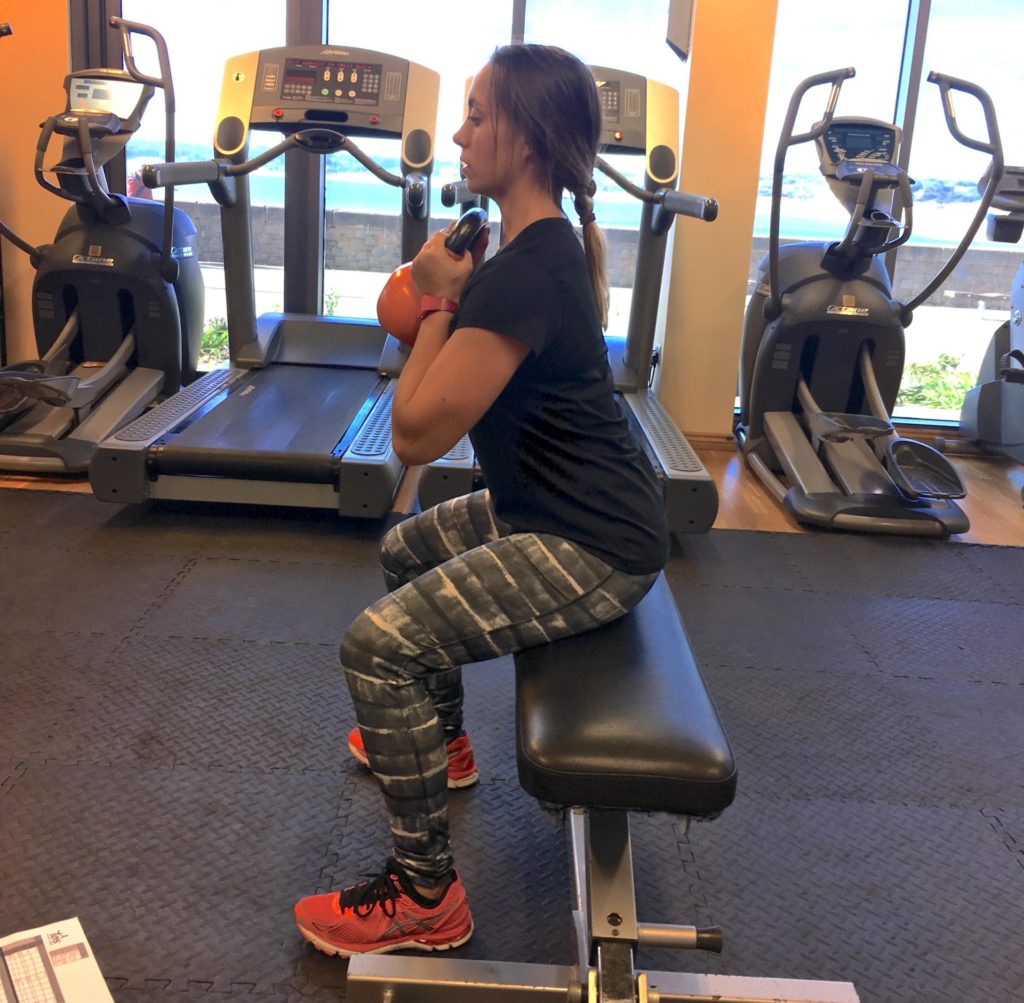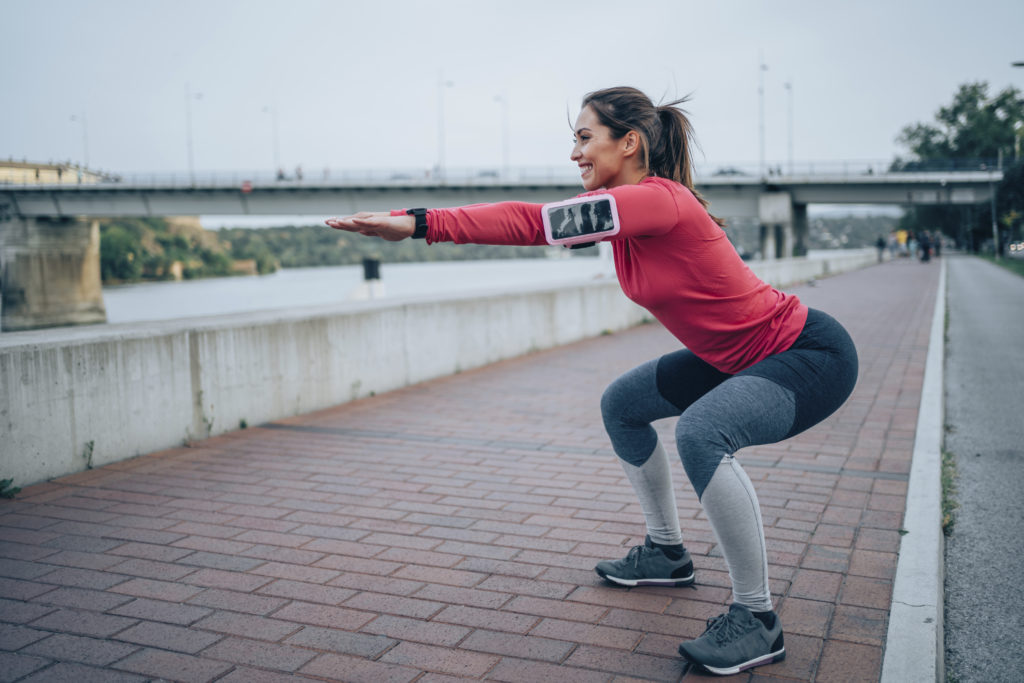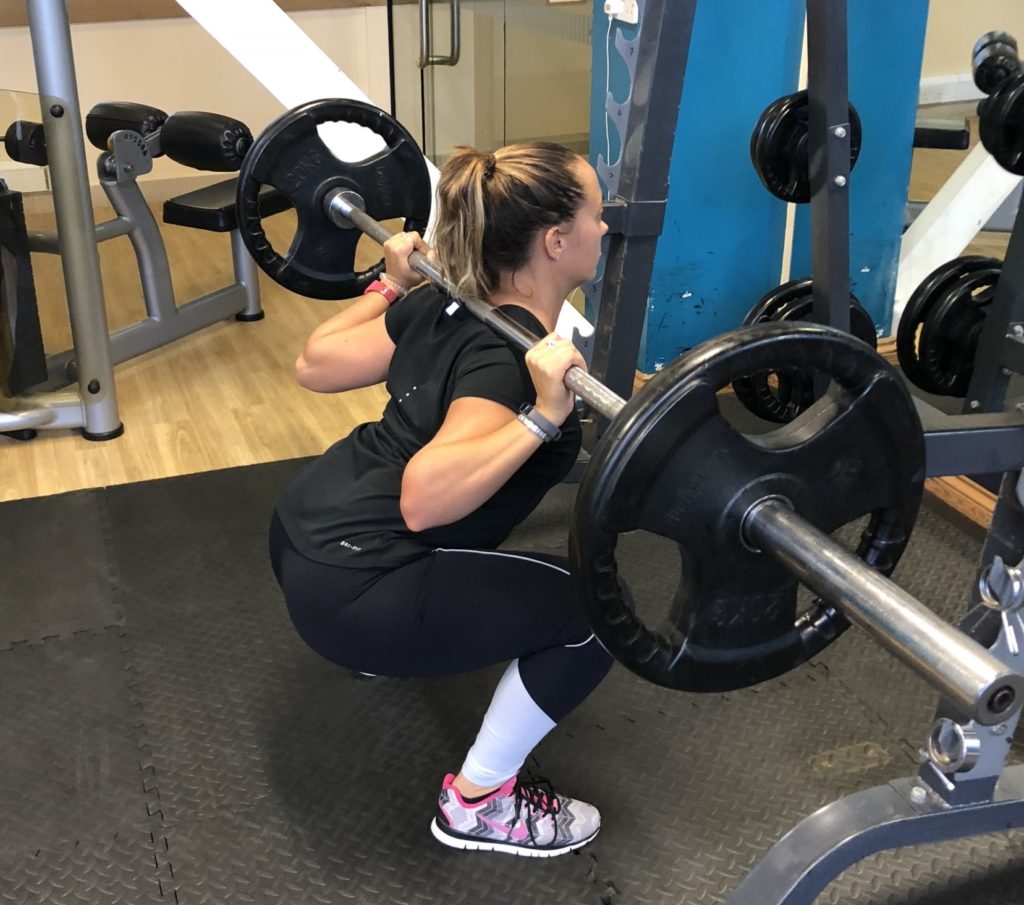Getting down with Lucy O’Sullivan
You may, by now, be slightly sick of my talking about gym exercises again. Don’t worry, I get it – but it’s all for the greater good, I promise.
Squats are my go to exercise that you didn’t know you needed in your life, and should start doing now. What is a squat? I usually say to all of my new clients that start with me in the gym: “Have you ever used the toilet?” and then enjoy the perplexed look I get while they say “yes”. Of course, I reply “oh good… that’s a squat” – then I receive a look of understanding. So that; bottom back, bending the knee, chest up movement we do to use the toilet, a movement pattern we all use, is a squat in its simplest form.
So why as archers, should we be practicing this exercise? Much to everyone’s shock, lifting a heavy weight protects and strengthen your tendons, bones and ligaments, while at the same time increases muscle mass, and an extra positive it helps you burn more calories. They will likely reduce your risk of injury too.

It does sound like it is counterintuitive to do squats to help your archery, seen as we are an upper body sport, but sports science agrees that good core strength and good core stability are contributing factors for overall athletic performance – all things which which are increased in a squat movement.
As well as assisting archery success, it will help you steam through daily tasks, improve your balance, and much else besides. It’s no wonder they are a basic part of most fitness, athletic and weight training programmes. Yet when I ask archers if they do them, I rarely get an enthusiastic ‘yes!’.
To complete a heavy squat it uses many muscles in the lower body; quadriceps, glutes, hips, calfs, hamstrings, as well as your core muscles; the spinal support muscles as well as the abdominals.
There is good evidence to suggest several benefits of completing a lower body exercise just before you complete an upper body exercise. The larger muscle groups, the legs and glutes, stimulated a larger amount of testosterone and growth hormone to naturally be released in the body, and therefore when an upper body exercise was performed after, there was more, and a quicker amount of muscle growth that occurred in the upper body, compared to the subjects who didn’t do any lower body exercises first.
So how can you get started with this compound movement (that’s an actual gym term, not just an archery term)? If you’re inexperienced or a little out-of-shape, the best place to start is finding a chair or bench, sitting down onto it with your legs at 90 degree angles to the floor and pushing yourself back off the chair without any assistance from any body part but your lower limbs. Progressions from there then involve performing this movement with one leg only, or sitting and standing onto the chair/bench with no other limbs to assist you.
From there I like adding a weight to the front or back of the body, holding a dumbbell on your chest, or a bar on your back under your last neck bone, at the top of your trapezius muscles. (Continue to use a bench to sit onto and stand from with as much control as possible.)
The next level would be using weights without a bench to sit and rest onto. To start with, only lower yourself as far as you can comfortably go. If you feel any pain in your hips or knees, stop and use that as the end point for the exercise.
Remember to get the knees to just below parallel with your hips. Once this is mastered your whole core will be working in sync to control your downward movement and upward movements to make you a more stable person and better archer.
The athletic standard is to be able to squat yourself down to parallel with your bodyweight on a bar on your back – but please bear in mind this may takes a lot of hip stretching and strength training to do so.
If you do suffer from back injuries or lower body issues, there are ways to focus on a squat pattern without physically doing a squat, such as using a leg press machine, double leg or single leg, or a hack squat machine, or again just focussing on getting on and off a chair without assistance from other limbs. (If you’re unsure about any of these terms, try typing them into YouTube!)
When it comes to strength, your lower body capacity determines your upper body capacity to lift, push and pull and generate power. To have a strong upper body you must also have a strong lower body, so it is good to work squats in conjunction with other compound lifts including; pull ups, push-ups/ bench press, bent over rows, deadlifts, and overhead presses.
If your main focus is squats, then make sure to complete this exercise first on your gym days, after a good warm up, and always leave some energy in the bank, so never go more then an eight-out-of-ten effort, to ensure you don’t get injured.
I do hope you give it a go and feel the benefit of stronger legs and core muscles for your archery this coming summer. For technique videos check out my YouTube channel O’Sullivan Archery
Happy squatting, and happy shooting!



